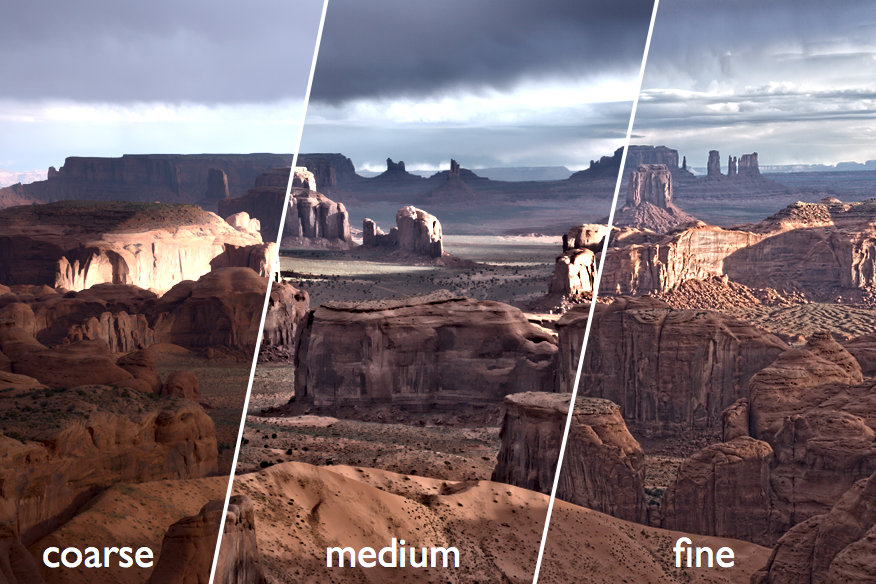Edge-Preserving Decompositions for Multi-Scale
|
|||
The Hebrew University |
The Hebrew University |
The Hebrew University |
Microsoft Research |

Abstract:Many recent computational photography techniques decompose an image into a piecewise smooth base layer, containing large scale variations in intensity, and a residual detail layer capturing the smaller scale details in the image. In many of these applications, it is important to control the spatial scale of the extracted details, and it is often desirable to manipulate details at multiple scales, while avoiding visual artifacts. In this paper we introduce a new way to construct edge-preserving multi-scale image decompositions. We show that current base-detail decomposition techniques, based on the bilateral filter, are limited in their ability to extract detail at arbitrary scales. Instead, we advocate the use of an alternative edge-preserving smoothing operator, based on the weighted least squares optimization framework, which is particularly well suited for progressive coarsening of images and for multi-scale detail extraction. After describing this operator, we show how to use it to construct edge-preserving multi-scale decompositions, and compare it to the bilateral filter, as well as to other schemes. Finally, we demonstrate the effectiveness of our edge-preserving decompositions in the context of LDR and HDR tone mapping, detail enhancement, and other applications. |
| Full paper: high resolution, 20.3MB, lower resolution, 3.1MB, BibTeX record |
| Video: QuickTime MPEG-4, 42.2MB or WMV, 18.4MB |
Supplementary Materials:It can be difficult to fully appreciate the differences between the small side-by-side images in the paper. Therefore, in these pages we include larger format versions of the images in the paper, with the ability to easily flip between them. We also include some additional examples and comparisons. Note: In order to view these pages properly, JavaScript must be enabled in your browser. In Internet Explorer, you may also need to allow blocked active content to run. Sections:
Code:A matlab implementation of the weighted least squares filter. Note that the times reported in the paper refer to a faster C/C++ implementation. An example demonstrating bilateral-like HDR tonemapping using this filter (this script was used to produce the result in Figure 7). Another example demonstrates multi-scale detail manipulation (this script was used to produce the results shown in Figure 9). A third example shows multi-scale HDR tonemapping (this script was used to produce the results in Figure 11). |